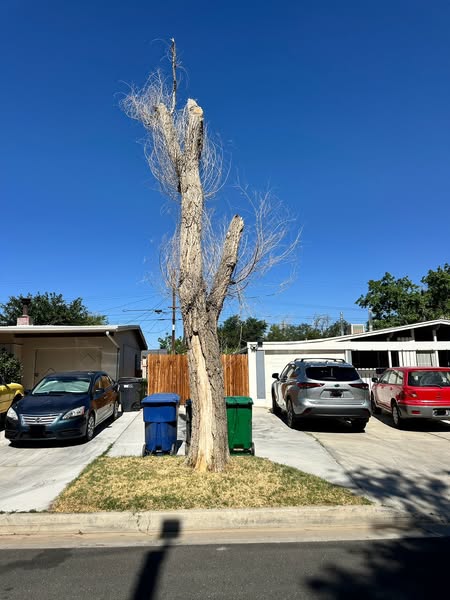Can My Neighbor Cut Down My Tree Without Permission? Understanding Your Legal Rights When Tree Boundaries Are Crossed

At Tip Top Arborists, we get dozens of calls every month from property owners who discover their trees have been trimmed, damaged, or entirely removed by neighbors—without a single word of warning. It’s more common than you might think, and the frustration is real. If this has happened to you, you’re probably asking: Was this even legal? Can I take action?
Here’s what you need to know about unauthorized tree removal, your legal rights, and how to protect your property before a dispute becomes a disaster.
Can My Neighbor Cut Down My Tree Without Permission? Who Owns the Tree?
Ownership comes down to one thing: location. In California, if a tree trunk stands entirely on your property—even if its limbs stretch across the fence into your neighbor’s yard—it is legally yours. That means your neighbor cannot remove, trim, or otherwise alter the tree without your consent.
If the trunk straddles the boundary line, then it is considered a shared tree. Both property owners must agree to major decisions like removal or significant pruning.
The Big Rule:
Your neighbor cannot legally remove or harm your tree if it is fully on your property. Doing so may make them liable for damages.
Common Scenarios We See
- A neighbor cuts back branches overhanging their yard and goes too far, harming the tree’s health
- Entire trees removed during fence installation
- Roots cut while trenching or laying irrigation lines, destabilizing the tree
- Trees poisoned or damaged to “make them die off”
These actions can open your neighbor up to civil lawsuits, especially if the tree had significant value or was a protected species.
What the Law Says
In California, courts have repeatedly upheld that intentional damage to another person’s tree can lead to:
- Triple the value of the tree in damages
- Replacement costs
- Additional penalties if the tree was protected or had historical/environmental value
Even cutting a tree down “by mistake” doesn’t eliminate liability. Property owners are expected to know their boundary lines before performing work that affects neighboring land.
How to Respond If Your Tree Was Removed Without Permission
- Document Everything
- Take photos of the damage
- Note dates, times, and any conversations
- Save quotes or valuations from arborists
- Request a Valuation
- Contact Tip Top Arborists for a certified tree value assessment
- This helps you understand your loss in dollars
- Speak to the Neighbor (If Safe to Do So)
- Keep things civil—many cases stem from ignorance, not malice
- Consult an Attorney
- Especially if the damage is substantial or the neighbor is uncooperative
- Request a Site Visit from a Certified Arborist
- We can help document the tree’s former condition, determine root or canopy damage, and provide expert insight
How to Prevent This From Happening to You
- Clearly mark boundary lines (surveys help!)
- Talk to neighbors before tree work begins
- Use fencing or landscaping to define property visually
- Educate yourself and your neighbors on tree law
At Tip Top, we believe prevention is the best cure. Proactive communication, documentation, and planning go a long way toward avoiding disputes.
Final Thoughts
Unauthorized tree removal is more than just inconsiderate—it’s often illegal. If you’ve experienced this, you’re not alone. And you’re not powerless.
Let our team of certified arborists help you understand your rights, assess your loss, and protect your property moving forward.
Need more information? See this article for more insightful details!
Here to Help you with your trees
Call today at 661-942-5501 or visit www.tiptoparborists.com
